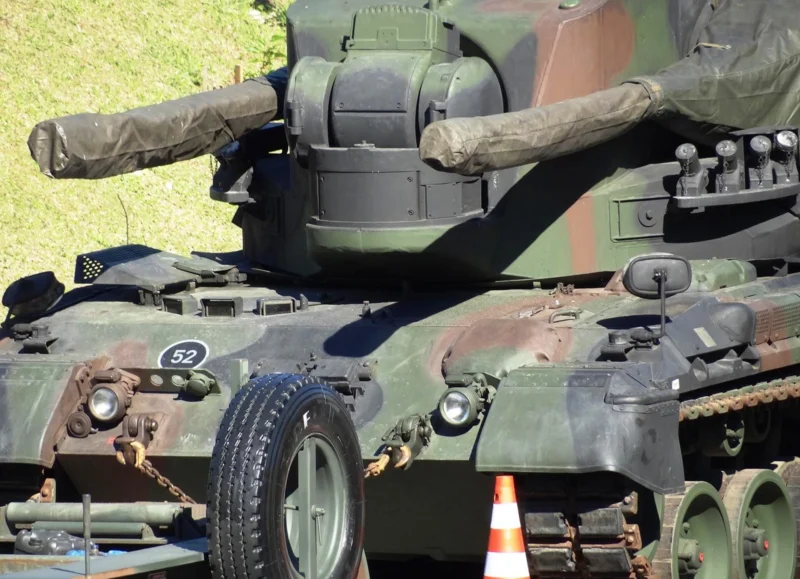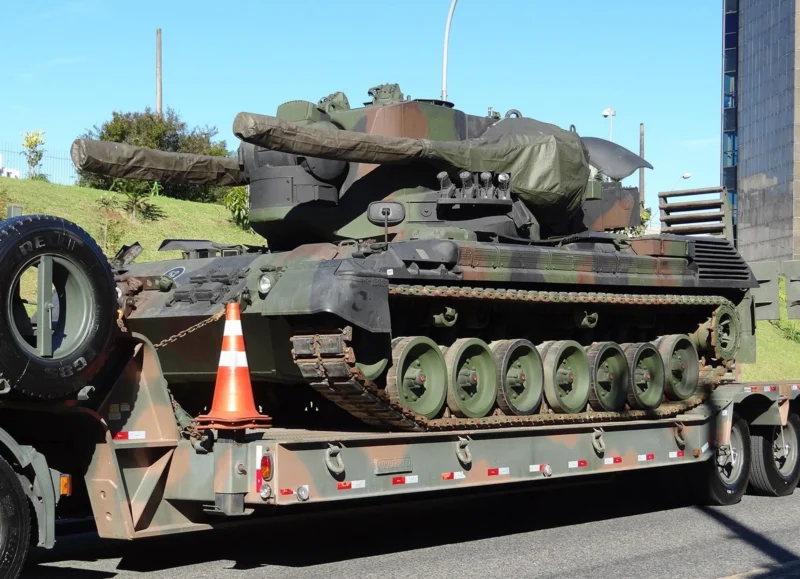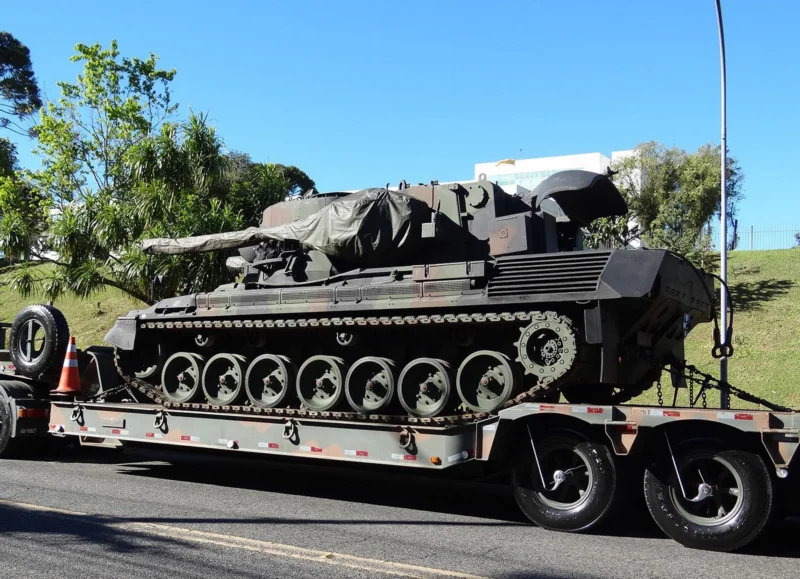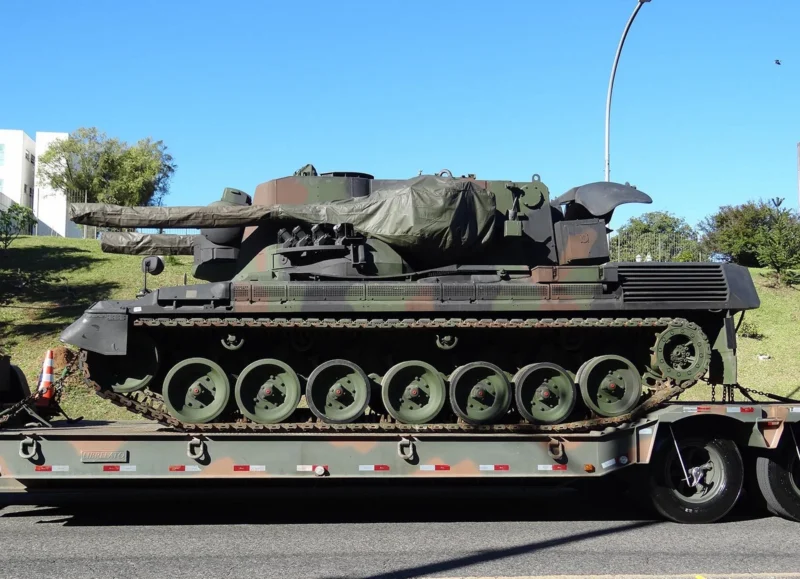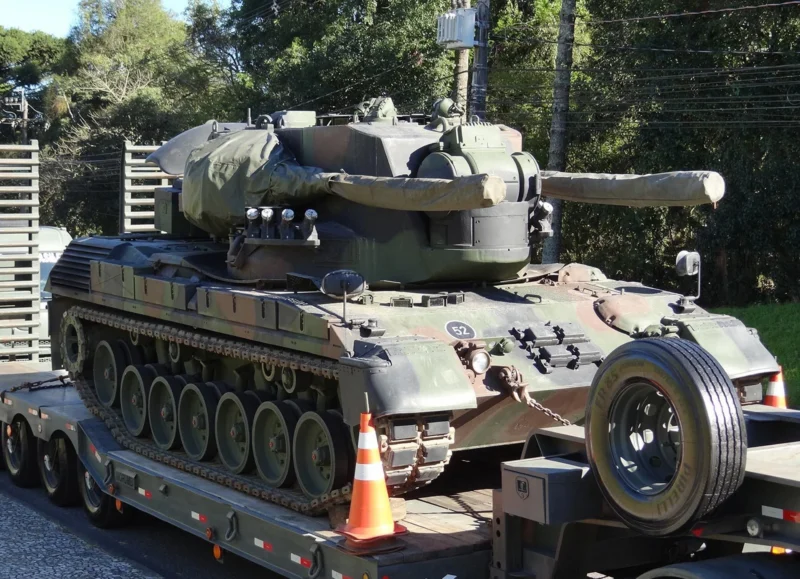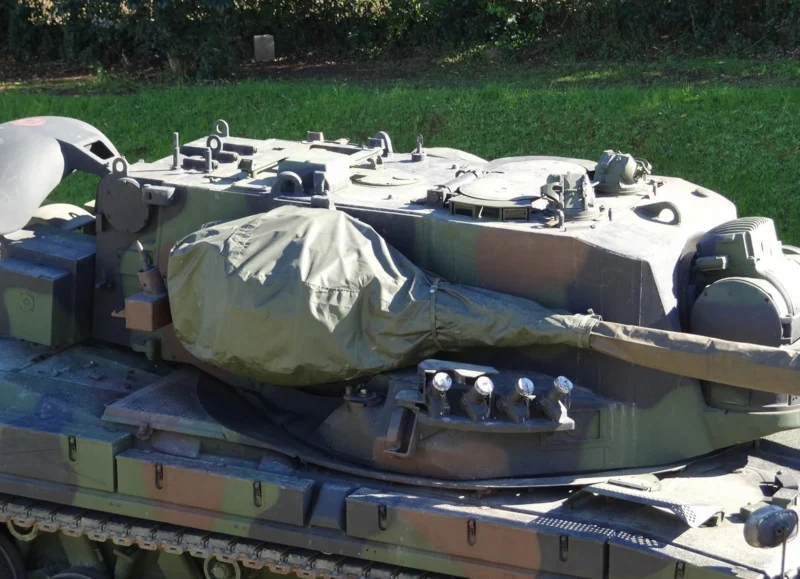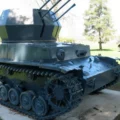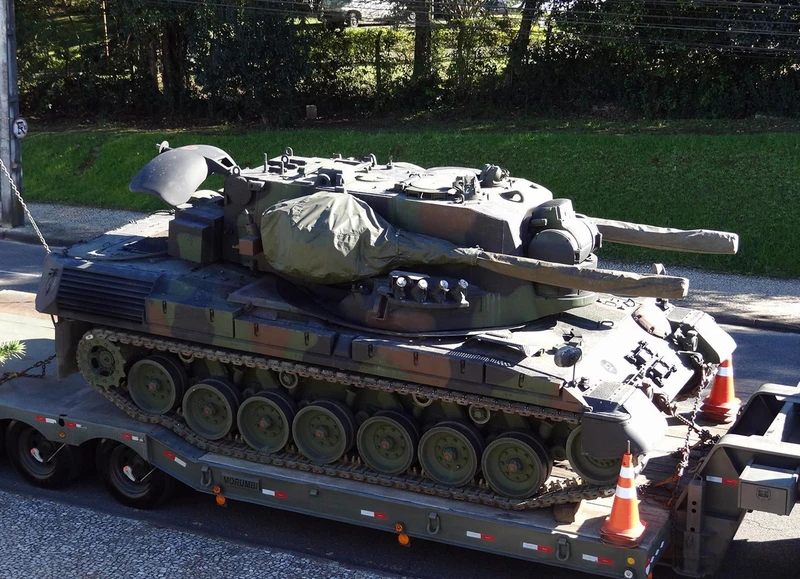
Gepard 1A2 | |
|---|---|
| Country | West Germany |
| Role | Self-propelled anti-aircraft gun |
| Built | Unknow |
The Flugabwehrkanonenpanzer Gepard (“anti-aircraft cannon tank Cheetah”, better known as the Flakpanzer Gepard) is an all-weather-capable German self-propelled anti-aircraft gun (SPAAG). It was developed in the 1960s and fielded in the 1970s, and has been upgraded several times with the latest electronics. It constituted a cornerstone of the air defence of the German Army (Bundeswehr) and a number of other NATO countries. In Germany, the Gepard was phased out in late 2010 and replaced by Wiesel 2 Ozelot Leichtes Flugabwehrsystem (LeFlaSys) with four FIM-92 Stinger or LFK NG missile launchers.
Source: Gepard 1A2 on Wikipedia
| Gepard 1A2 Walk Around | |
|---|---|
| Photographer | Gino Marcomini |
| Localisation | Unknow |
| Photos | 31 |
| Flakpanzer Gepard A1-B2L Walk Around | |
|---|---|
| Photographer | Unknow |
| Localisation | Unknow |
| Photos | 27 |
| Gepard B2 Walk Around | |
|---|---|
| Photographer | Unknow |
| Localisation | Unknow |
| Photos | 43 |
See also:

General Characteristics
The Polikarpov Po-2, originally designated U-2 (for ‘Uchebnyy’ or ‘Training’), is a Soviet utility and trainer biplane designed by Nikolai Polikarpov. First flying in 1928, it became one of the most produced aircraft in history, with estimates up to 40,000 units built. Its simple, rugged, wood-and-fabric construction made it inexpensive, easy to maintain, and capable of operating from small, unprepared airfields (STOL capability). During World War II, despite being obsolete, it was effectively used as a light night bomber, liaison, medical evacuation, and reconnaissance aircraft. It was famously flown by the all-female 588th Night Bomber Regiment, nicknamed the “Night Witches” by the Germans, who also called the plane the “Nähmaschine” (sewing machine) due to the sound of its engine. [Image of the Royal Aircraft Factory R.E.8 biplane in flight]
| Property | Typical Value (Trainer/Light Bomber Variant) |
|---|---|
| Role | Trainer, Utility, Light Night Bomber, Liaison |
| National Origin | Soviet Union (USSR) |
| Designer | Nikolai Polikarpov |
| First Flight | January 7, 1928 |
| Production Period | 1929 – 1959 (Soviet Union & Poland) |
| No. Built | 20,000 – 40,000 (across all variants, estimated) |
| Crew | 2 (Pilot, Observer/Gunner) |
| Empty Weight | Approx. 700–770 kg (1,540–1,700 lb) |
| Maximum Takeoff Weight | Approx. 1,350–1,400 kg (2,980–3,090 lb) |
Powerplant and Performance
- Engine: One Shvetsov M-11D / M-11FR 5-cylinder, air-cooled radial engine.
- Power Output: Typically 93–119 kW (125–160 hp) depending on the variant.
- Maximum Speed: Approx. 130–152 km/h (81–94 mph).
- Cruising Speed: Approx. 100–110 km/h (62–68 mph).
- Note: This slow speed was often an advantage against German fighters, whose stall speed was higher than the Po-2’s top speed.
- Range: Approx. 450–630 km (280–390 mi).
- Service Ceiling: Approx. 3,000–4,000 m (9,800–13,100 ft).
- Key Design Feature: All-wood airframe with fabric covering, making it virtually invisible to early radar.
Armament (Light Bomber Variant)
- Defensive Armament: One rear-facing **7.62 mm ShKAS machine gun** in the observer’s cockpit (in U-2VS/Po-2 LNB variants).
- Bombload (External): Up to **300–350 kg (660–770 lb)** of bombs carried on racks beneath the lower wings and fuselage.
- Typical load: Six FAB-50 (50 kg) bombs.
- Combat Use: Used primarily for “nuisance raids” at night, often gliding silently over targets after cutting the engine.
- Wingspan: 11.40 m (37 ft 5 in).
- Length: 8.17 m (26 ft 10 in).
Views : 3955
